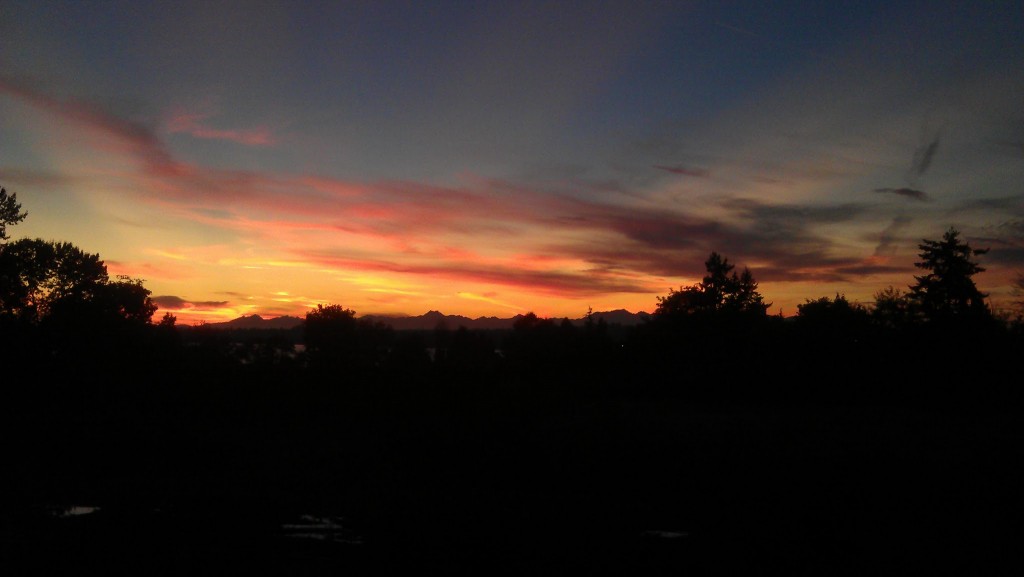The best camera you have with you
A phrase you’ll hear mentioned from time to time is “the best camera is the one you have with you”. The point of the phrase is that it’ll do you no good to get the D4 I mentioned in the last post if you don’t carry it around with you all the time. Since there isn’t a smartphone without a camera built-in anymore, we’re now at a point where you almost always have at least one camera with you. But sometimes, it’s been fortunate that I’ve had more than one. Like back in October, when there was a nice sunset at about 6:40pm, as I was leaving the Google offices. I took a picture with my HTC Sensation:
While there are worse cameraphone images, I was pretty disappointed. The sunset looked much nicer than the above, and you didn’t have to look too closely to see lots of noise in the image. Fortunately, the best camera I had with me wasn’t the one that was built into the HTC Sensation; I was carrying the PowerShot S90 (about 1.5 years older than the HTC Sensation). I felt it captured the sunset a little better:
Zoomed in a little, something you still largely can’t do optically on smartphone cameras:
I mentioned in looking at the statistics of which cameras/lenses I actually use, that I barely use the S90, and this is true. But because I have it much of the time, it’s still handy when I don’t have a DSLR nearby (which I never do when walking to/from work).
I read recently that sales of compact cameras in 2011 were significantly lower than 2010, as a result of the growing ubiquity of smartphones. It’s a shame that many people might not fully realize what they’re giving up when going to the cameras built into their phones, even in comparison to a compact camera. As I mentioned in a post when I was still kicking myself for not having my DSLR when we ran into Kim Clijsters, the difference in output between classes of camera (phone, compact, 4/3rds or APS-C, and 35mm) is still huge. With even a consumer-grade D5100 or D7000 in the above situation, there’d even have been enough dynamic range in the picture to bring out some foreground detail (if you want it), like this shot in much less interesting conditions in Vancouver:
I’m not that fond of the above photo, but I’m nevertheless amazed that it’s possible to capture the sun and details in the trees (you’ll need to click for the larger version to actually see the detail, probably) in a single frame with no HDR tricks applied. Unfortunately it seems like it will still take at least 5-10 years (given that APS-C overall performance is just now approaching the first full-frame D3 from over 4 years ago, and that the sensor size drop going to a compact is much bigger) before compacts reach what APS-C sensors can today.



